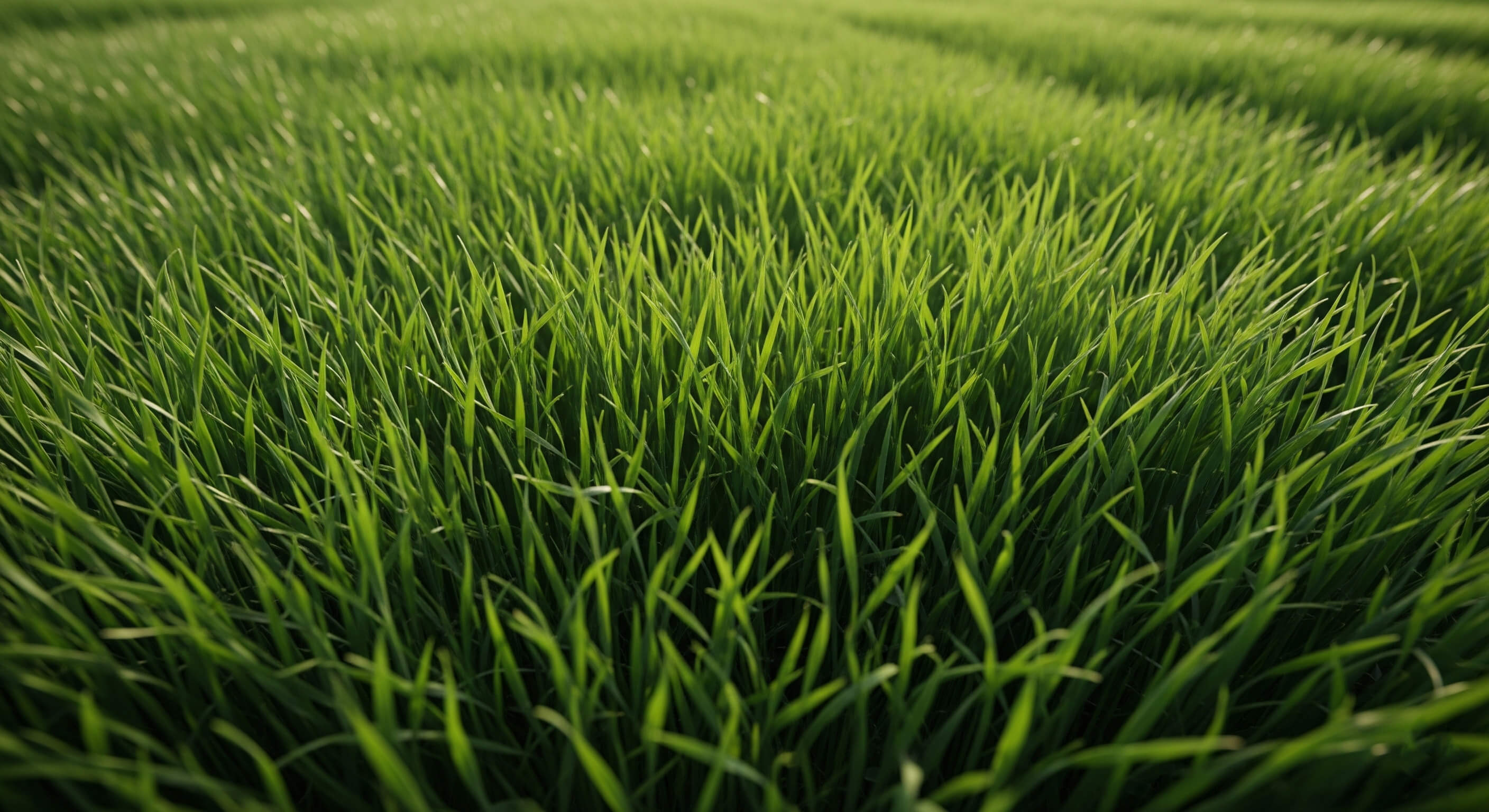
Perennial Ryegrass
Faster germination, good for overseeding
Poa pratensis
Ask any northern homeowner about their dream lawn, and Kentucky Bluegrass probably ranks high on the list. Despite its name, this grass actually came from Europe and Asia, getting its American name from the bluish seed heads that show up in Kentucky's fields each spring.
Kentucky Bluegrass forms that classic American lawn - dense, dark green, and soft underfoot. It's the grass of baseball fields and suburban yards, valued for its beautiful color and ability to recover through underground rhizomes. When well cared for, few grasses rival its aesthetic appeal.
Kentucky Bluegrass has multiple unique traits that make identification easy once you know what to look for.
The leaves have a distinctive boat-shaped tip, resembling the prow of a canoe. This V-shaped leaf tip is unique among common lawn grasses. The blades are smooth on both sides, with a prominent midrib running down the middle. The color varies from bright green to dark blue-green, depending on the variety and nutrition.
Examine the collar area where the blade connects to the sheath closely. You will notice a short, membranous ligule (around 0.5-1mm) and no auricles. The leaves mostly have parallel sides before tapering to that distinctive boat-shaped tip.
Growth habit reveals another characteristic - Kentucky Bluegrass spreads through rhizomes (underground stems), forming a dense sod. New shoots grow from the soil away from the parent plant, gradually filling in bare spots. This self-repairing ability sets it apart from bunch-type grasses like perennial ryegrass.
Thrives in USDA zones 2-7, with some varieties tolerating zone 8 if there is adequate moisture. Optimal growth occurs between 60-75°F. Summer temperatures above 80°F cause stress, especially without enough water. It goes dormant during hot, dry summers but recovers quickly in fall.
Prefers well-drained, fertile soils with a pH of 6.0-7.0. Clay soils work well if properly amended. Sandy soils require more frequent fertilization and watering. Does not tolerate waterlogged conditions, so good drainage is essential to prevent disease.
Performs best in full sun (6-8 hours daily) but tolerates light shade better than most cool-season grasses. In shade, it becomes less dense and more vulnerable to disease. Mixing with shade-tolerant varieties enhances performance in partially shaded areas.
Kentucky Bluegrass seed is tiny - about 2 million seeds per pound. Use 2-3 pounds per 1,000 sq ft for new lawns. Germination is known to be slow, taking 14-30 days. Keep soil consistently moist during establishment. Fall seeding (August-September) usually works better than spring.
Provides instant lawn but costs much more than seed. Best installed in early fall or spring. Requires careful watering for 2-3 weeks until roots develop. Choose sod grown from improved varieties for better performance.
Pure Kentucky Bluegrass lawns look beautiful but can require lots of upkeep. Many experts suggest mixes with perennial ryegrass (for fast growth) and fine fescues (for shade tolerance). An 80/20 bluegrass/ryegrass mix offers both beauty and practicality.
Maintain a height of 2.5-3.5 inches during the growing season, and higher during summer stress. Never cut more than one-third of the blade length at a time. Sharp blades are essential—dull mowers tear instead of cut, leaving ragged edges that are vulnerable to disease.
Requires 3-6 pounds of nitrogen per 1,000 sq ft annually. Apply most of it in fall (September-November) when root growth is at its peak. Do a light spring application after green-up. Avoid heavy fertilization in summer, as it increases disease risk.
Needs 1 to 1.5 inches of water weekly during active growth. Deep, infrequent watering promotes deep roots. Watering early in the morning reduces the risk of disease. During drought, Kentucky Bluegrass goes dormant but recovers once moisture returns.
Moderate thatch production. When thatch exceeds 0.5 inches, aerate in the fall. Avoid excessive nitrogen, which speeds up thatch buildup. Proper mowing and fertilization help reduce thatch problems.
Circular patches of dead grass appear during hot, humid weather. Improve drainage and avoid excessive nitrogen. Fungicides may be needed in severe cases.
Small, silver-dollar-sized spots merge into larger patches. Most common during humid weather with cool nights. Maintain adequate nitrogen and remove morning dew.
Orange powder appears on blades during late summer or fall. Usually cosmetic, but improved fertility and regular mowing help control it. Choose resistant varieties for problem areas.
Deep green color with excellent density. Grows low, reducing mowing needs. Good disease resistance but slower to establish.
Offers superior heat and drought tolerance. Produces aggressive rhizomes for quick recovery. Keeps color better during stress than older varieties.
Fast germination and establishment. Good shade tolerance for bluegrass. Excellent spring green-up.
Designed for low-input management. Uses less water and fertilizer. Ideal for eco-conscious homeowners.